How to prepare now for the workplace of the future
In the last 18 months, the “workplace of the future” has accelerated faster than we could have imagined. No longer are we...
Workplace planning has always been a lever for competitive advantage. But employee expectations of their workplaces have changed dramatically and your workplace strategy must respond.
There is both an essential need here - to respond to a paradigm shift in workforce behaviours, expectations and patterns, but there is also great opportunity. How you respond may be the difference between gaining a significant advantage and dealing a detrimental blow to your company's bottom line by not supporting a changed way of working.
Need: An engaging, collaborative workplace where employees are supported in their different ways of working
Opportunity: A purpose-driven workplace with spaces specifically designed for work best done together which will inspire innovation, learning and improve client outcomes.
A workplace strategy should translate into business advantage. But with so much to consider and without hard data to inform your decisions, it can seem easier to take a ‘wait and see’ approach.
By engaging in a workplace strategy, you can define how your real estate footprint will support your business requirements, explore employee wants and needs and plan for your future business vision – using data to back up your hypotheses and a formalised workplace strategy to bring it to life.
The employee experience has changed. In recent years we have seen the accelerated adoption of new ways of working.
"Hybrid working, agile working, collaboration hubs and other trends are not new ways of working - it is simply that we’ve seen mass adoption of these ways - out of necessity - in the last three years. For example, agile working used to be common in product development, but now, it has been applied much more broadly as people have realised the benefits of the agile approach."
This is just one trend that has been accelerated and expanded. Here’s what else we’re seeing emerge in Australian workplaces:
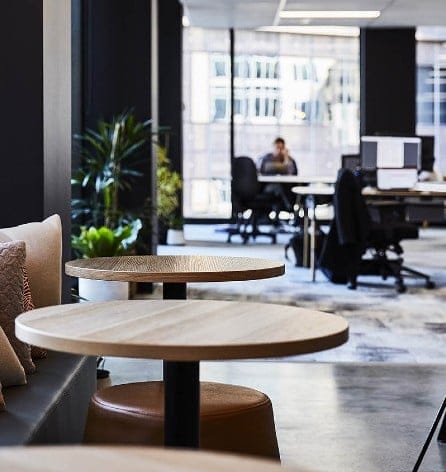
"As with anything, it's best to start with an understanding of who you are accommodating and what their particular needs are," explains Xenofontos.
In fact, the one-size-fits-all office has been diminishing in popularity for a few years now. Just like businesses have unique requirements and performance goals, they also have unique workplace needs.
But it's not just the rise in hybrid working that has increased demand for the fit-for-purpose office. Changed organisational structures, fresh perspectives on work-life balance and a renewed focus on sustainability all change the requirements of an office to varying degrees for every business.
Activity Based Working (ABW)
This working style allows employees to choose from a variety of spaces according to the nature of the work they're undertaking. First seen in the early 1980s, ABW is customised to suit individual organisations and is empowered by choice.
Agile working:
Appearing in the 1990s/early 2000s, the agile working methodology is about modular, project-based workspaces which can create different spaces thanks to flexible furniture and fit-out materials.
Open-plan / Hot desking:
This working style has been around since the 1940s but gained popularity in the 1990s. Lately, open-plan offices have received significant criticism for compromising employee focus, but at Axiom, our attention is on the type of fit-out best suited to your organisation, not whether open-plan is good or bad.
Flexible working:
Although only established in the last decade, the idea of flexible working has been around since the 1970s. Flexible working is defined as leaving behind the traditional, rigid 9-to-5, five-day week structure. The flexible working model encourages diversity and inclusion, helping to future-proof and strengthen organisations.
The utility has evolved significantly. While remote work was trending upwards pre-2020, the pandemic accelerated it. With a mix of office and remote work, the new norm for office workers, a now commonly-accepted and widely permanent hybrid working model needs to be better supported by the physical workplace.
As flexible working has become more prevalent, so has the need for a more flexible workplace. A flexible workplace empowers staff to choose where and when they work (e.g. agile working) and ensures the workplace itself is flexible to a scaling headcount.
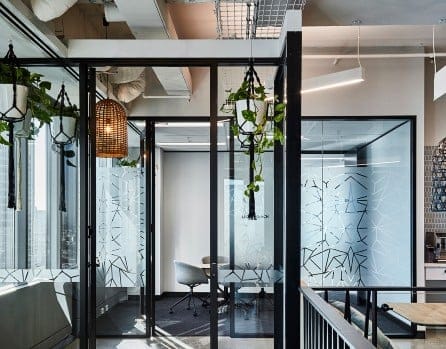
Workplace data has become an essential tool in the modern office. Real-time occupancy data helps you identify spaces that are being used versus those that are not. Room booking data can highlight working patterns such as a bigger shift towards meetings while in the office space.
A workplace that gathers this data can use it to make informed decisions about what the office needs to be, how it needs to be designed and what functionality it needs to have.
The old office where employees come to do everything from returning emails and admin to deep, focused work is gone. The past couple of years have shown us that lots of work can be done efficiently and productively from home. It's also clarified that some work is done much more effectively in a face-to-face, collaborative setting like workshopping ideas and getting to know a new colleague.
The new office is a destination that invites people to come in for a specific purpose and is designed to support this. For some businesses, this will look like building connection or collaboration hubs, and will potentially move away from having one CBD location, to having localised hubs that enable more accessible collaboration.
What was once a competitive advantage and more thought of as an EVP value-add, has now become a mandatory feature of any workplace. Wellness initiatives have now expanded to include contactless technology and on site density awareness and sensitivities to how employees feel in highly populated work areas. Additionally, more than ever before, we are now aware of how anxiety and stress have a measurable impact on commercial performance and that workplace has a role to play in this realm. According to Gartner, organisations have increased their wellness initiatives, in an effort to support mental and emotional wellbeing.
Millennials are struggling with a lack of in-person mentoring and constant feedback on their work as opposed to older generations who feel stable in their roles and are comfortable working out of the office.
New employees are grappling with onboarding outside of a physical workspace.
Employees at the beginning of their careers missing out on incidental learning opportunities as they are isolated by working from home.
Poor acoustics in physical spaces designed for in-person meetings causing an inferior experience in virtual meetings.
There are many ways to create a productive, vibrant and exciting workplace, and you may already have a vision of the direction you want to go, but what you need is the data to support your hypothesis and drive you in the right direction.
“Data will help you to understand the ‘complexities,” says Xenofontos. "It will inform you on who is using space and how they are using it."
Workplace data will allow you to make informed real estate and space management decisions - to pull the right levers and enable you to strategically plan for a safe workplace, maximise usable space, and minimise costs.
There isn’t a single data point which is going to give you all the information you need. Xenofontos says, "You can't just isolate one section of data because it'll give you a sliver of insight, but not the whole picture."
1. Incorporate past, present and future measures
To look to the future of work, you must first understand where you've been and where you're at now. Historical data around office size, lease terms, utilisation, headcount and running costs will help you paint a picture and create a foundation to work from. And work pattern studies, cross-section company workshops, interviews with employees and occupation studies will give you a snapshot of what’s happening at the moment. But don't rely on the past and the present for a full and accurate picture; also include forward-looking, anticipatory, predictive measures.
2. Continuous, real-time data collection
While historical data is great and snapshot data like an occupancy study is helpful, accessible, real-time, ‘as it’s happening’ data is key to making quick adjustments and picking up trends as they happen. This data could come from desk check in systems, secure access points or from sensors throughout your space.
3. Data that supports strategic aims and objectives
As with most things, the data you're collecting needs to be aligned with the broader goals of your business. For example, perhaps your company wants to improve ESG reporting to attract better investors or improve bottom line performance. What role does the workplace play in supporting a better ESG position? It could look like moving to a place with more public transport, a flexible approach to people working in the office (less driving) and choosing to use natural materials instead of plastics. From here decide on the measures you need to be watching to report on these things: this is the data you’ll want to be collecting. Note: Include data that encompasses a range of financial and non-financial measures.
The physical workplace isn't going anywhere. However, its purpose has shifted as the needs of employers and employees have transformed. The workplace remains an important place for collaboration, teamwork and culture-building to occur. But recent research has found that globally the overall corporate footprint is expected to be smaller two years from now for 54% of the companies surveyed. On the flip side, 18% said their footprint would be increasing, and the remainder has said they forecast neither an increase nor decrease over the coming years.
So whether you're accommodating for growth, downsizing thanks to a change in circumstance, or simply changing the workplace mix to reflect new ways of working - real estate rationalisation is probably on your agenda.
Xenofontos says, “what that rationalisation looks like will boil down to the purpose of the workplace.”
She also mentions that growth plans don't always mean an increase in square meterage: "Many companies are planning to grow without physically needing growth in the office environment. Some organisations are growing offshore, or they're growing by automating certain functions, leaving the opportunity for onshore positions to be more creative and fulfilling."
There are a few different ways to rationalise your real estate commitment while still accommodating for future growth. Let's explore the different approaches.
Collaboration and teamwork
Although collaboration doesn't have to happen face-to-face for it to be successful, it is almost always easier to encourage powerful co-creation when people are in the same physical space. Although not ideal, the reality is that the need for virtual collaboration is only growing. Tools like Slack, Zoom, Microsoft Teams, Google Drive make it possible for dispersed teams to come together and work with one another virtually.
Employee engagement and company culture
Remote employees can often feel left out of team lunches, water cooler chats and casual office banter, and that's because they are! With more and more employees working from home, companies need to be conscious of these feelings and ensure ALL employees are being engaged and feel a part of the team. A remote workforce doesn't have to be a disconnected one. Technology has made it feasible to communicate, collaborate, and lead from any place but it does take intention and thoughtfulness to make it work.
Data security
Virtual employees and staff using mobile devices is a challenge which will become further pronounced. Protecting sensitive data with proper cybersecurity is crucial. Keeping information secure online isn't just the realm of the IT department; all employees need education in data security measures
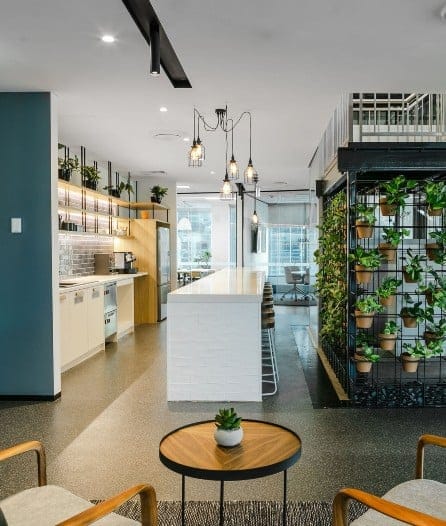
Unavoidably, some organisations are reducing their real estate footprint, for instance, by sharing workstations or through more remote working. The outcomes can be advantageous in a few ways:
Of course, there is a downside to your downsize too: Lack of space may become an issue if your growth plans include an increase in headcount. And, of course, downsizing may not be an option for you if you are committed to a longer lease term.
A sale-and-leaseback transaction is when the owner and occupier of a commercial building sells it but remains a tenant. This might be an entire building or a floor in a building.
Some advantages include:
It's not all good news, though; there are cons to this type of transaction, including:
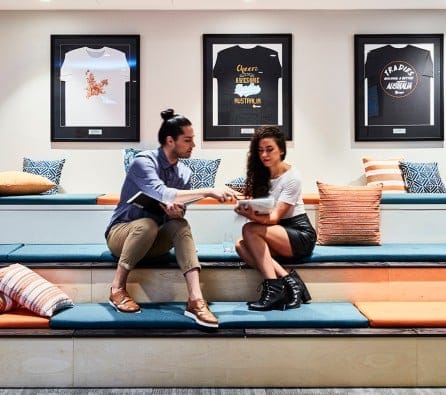
Not everyone is looking to downsize. And now may actually be the perfect time to expand. Deloitte has found that, "Construction activity in office buildings together with a slowdown in take-up has put pressure on rent (both headlines and economic) in a number of submarkets. This puts corporates in some submarkets in a strong position to negotiate for new spaces and for amending existing lease terms."
Bringing the hybrid work model into actuality could mean a reduction in office space for some companies. Still, for many others, it will mean an uptick in corporate real estate is required to meet the changing ways of how work gets done and distancing requirements.
So rather than thinking in terms of downsizing and upsizing, it may be most beneficial to think about 'rightsizing'. This may look like reducing the space used in certain parts of the business while expanding the space used in other parts of the company. E.g. dropping the number of individual workstations but expanding areas used for collaborative work. It may also mean creating spaces which are multi-purpose, like the flexible boardroom we recently created for Scottish Pacific.
Naturally, knowing the option that is right for your business is half the battle. A direct, well-informed workplace strategy will give you the answers to make the right decision.
The greener the better
We're not just talking more indoor plants, but some serious green sustainability credentials too. We see a shift where creating a top-quality working environment, which is more responsible in terms of sustainability, becomes beneficial for business as well as for the environment - attracting prime talent from the eco-conscious younger generations.
Personalisation and flexibility
Activity-Based Working will continue to play an important role in workplace design. Offices will be designed to foster employees' intellectual processes and working preferences - catering for and enhancing people's working lives. Workspaces will provide different environments for different phases of work and also include virtual spaces where remote employees can collaborate with those on-site.
Artificial Intelligence (AI)
Xenofontos explains that the design, appearance, and functionality of your space communicates a lot about your company culture: "When you're creating a workplace, you're not just providing someone with a bland grey office that could belong to any brand. You're creating a purposeful space that builds a culture and not only fosters a connection between people but also a connection to your employer brand and your organisation," says Xenofontos. "People are hardwired to connect".
The design and layout of space can encourage connection and culture or, on the flip side, it has the potential to damage it; cutting your organisation off from a vast array of advantages:
So how can your workspace foster connection and build a strong workplace culture?
A destination workplace is one where employees want to come to - one that nurtures innovation, creativity and promotes productivity. There are many ways you can ensure your office becomes a destination workplace:
"The more seamless and intuitive you can make a connection, the better you can facilitate the natural way your team connects, the more your employees will engage," says Xenofontos about workplace technology.
Facilitate easy, safe and successful workplace connections with seamless AV in meeting rooms - minus the cables, pin codes and fumbling - or intuitive laptop docking in collaborative spaces or properly designed boardroom acoustics which don’t disadvantage those connecting virtually.
For example, Axiom created a truly connected space when working with Cisco Meraki to design their Sydney office. Naturally, Cisco Webex technology was used throughout the workplace, but technology really enhanced the sense of community with tiered seating around a large screen - built for the purpose of the monthly video dial-in with San Francisco.
Amongst new ways of working, there is a common theme - people are coming together in a more purpose-driven way. Employees aren't turning up at the office full time to send emails, do admin tasks or undertake deep work. The workplace has become a destination with a clear purpose, and the spaces within need to reflect that.
Collaborative spaces can be designed to inspire innovation and nurture creativity. Break out areas encourage 'water cooler' chat and the overall design and ambience can showcase your brand to employees and clients. Each space in a workplace now has a clear purpose and can be designed to promote certain behaviours and evoke positive emotions.
For example, Axiom created a front of house showroom ‘journey for our client Axis Communications to display multiple products for clients. Staff are also treated to a journey of their own, featuring varied work points, focus spaces and collaboration spaces.
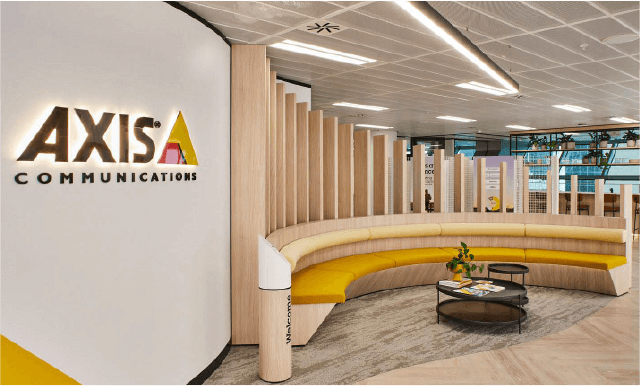
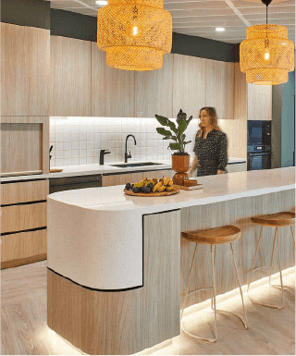
Employees’ attitudes and expectations have changed to include a focus on safety, health and wellness.
“It's about creating an office environment that promotes physical and mental health for employees,” Xenofontos says. “Productivity is very much supported by creating a healthier environment - people will have fewer sick days, and they will be able to rejuvenate the brain."
Stimulating surroundings designed with wellness in mind will encourage employees to come into the workplace and provide a more productive experience for them while they're there.
"You can't just jam a team in a production area and expect to get the best out of them," explains Xenofontos.
Part of the work here is determining the factors which will have a positive effect on the wellbeing of your employees. The best place to start? Asking them. We recently completed a project for managed services provider AC3 where workplace strategy workshops uncovered a need for more collaboration and breakout areas plus a games area and a now-much-coveted coffee station.
At co-working space JAGA, the need was a large multipurpose space that could be used for yoga or other group.
The way we work is evolving and outside forces have amplified many of our ways of working over the last three years. It’s never been more important to know your workplace planning options, have access to the data and analytics to back up your hypotheses and create a workplace which fosters productivity and aligns with your business’ strategy.
You can measure the effectiveness of your workplace's design and its impact on your people through our wrkx Thrive Index™ metric. Visit this link for more information and book a consultation.

In the last 18 months, the “workplace of the future” has accelerated faster than we could have imagined. No longer are we...
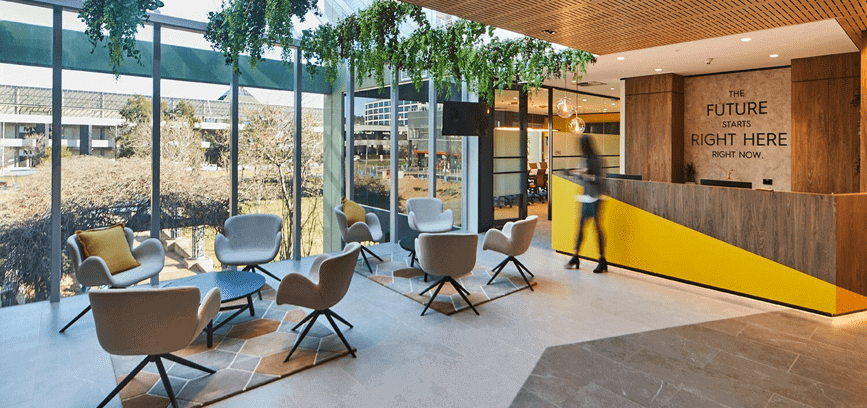
With remote working now the norm for many workers in Australia, employers are facing the challenge of how to encourage...

Workplace wellness and wellbeing isn’t a new trend. The wellbeing of employees is a topic that has been on the rise for...
